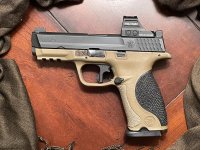If this is an EDC gun for you, it is wise to have co-witnessed backup iron sights for many reasons.
As well, having your slide milled for a specific optic footprint (usually an RMR as most of the major players have followed that spec) is wise because it is the most direct, secure and low mounting possible. Be careful not to choose an optic that is inherently very tall, like the Delta Point Pro, because that will negate some of the ease of use of a low mount RDS.
You are correct that a good milling job will consume the factory rear sight dove tail. A new dove tail close to the back of the slide is cut, usually for a Glock MOS sight base. Be aware, that factory cut (according to Dawson Precision) is not straight but tapers slightly toward the middle for a tighter fit.
As to the height of the iron sights, that depends on two things:
1. The height of the RDS window above the slide (lower is better), and
2. Your preference for intrusion of the two sights into the bottom of the window.
Common advice is “lower 1/3 co-witness”, but I think that is more for larger window carbine sights.
On a pistol sight 20% intrusion is plenty. That’s what I started with and found it worked fine to learn to shoot the dot. It does not occlude too much of the target.
However, I now favor 10-15% intrusion and find it effective for iron sight use and it gives a lot of unobscured window. Personal/choice experience.
With the RDS mounted, measure from the bottom of the dovetail to where you want to have the bottom of your rear sight notch. I like it right at the bottom of the window. Then the (wide) sight notch sides will protrude ~12% into the bottom of the window.
Dawson Precision formulas will help you determine the corresponding height of the S&W (narrow) front blade to get good hits on paper at your chosen sight in distance with your defensive ammo.
Keep colored sights to a minimum, and nothing should be the same color as your RDS reticle. Even plain or serrated black works great.
My co-witness means my red dot sits right on top of my aligned front sight. My aligned iron sights put the bullet on target with the RDS turned off. Ignoring the irons and using only the dot in the window gives hits equal to where the irons are actually pointing. This is where speed and accuracy meet for target focused shooting.
In short, Dawson’s Customer Service will walk you through any questions and help you get set up the way you want.
It’s worth it.

